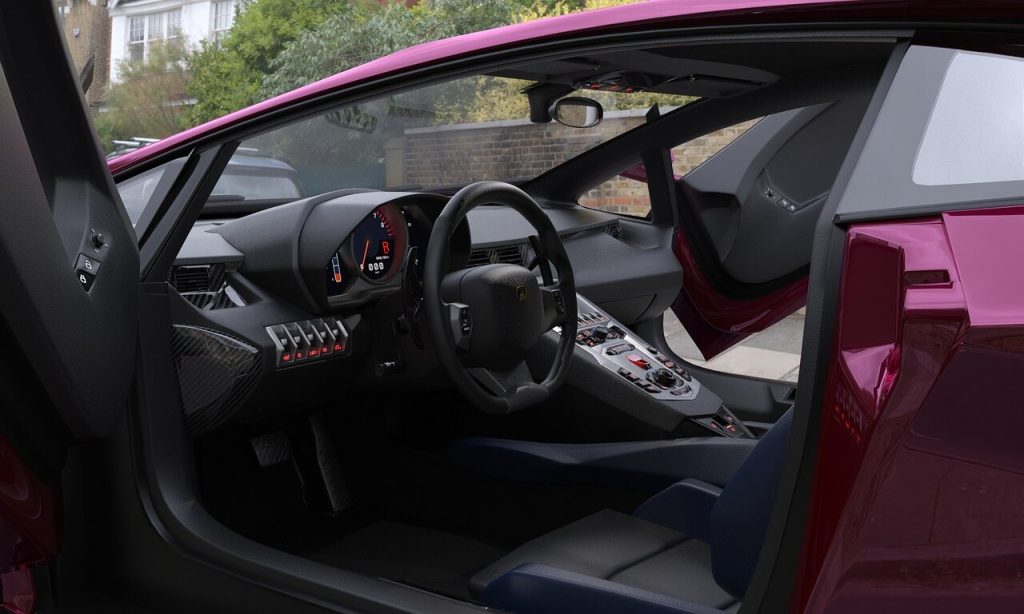This article was updated in June 10, 2023 with new products and information by Mark S. Taylor
Car door rubber seals play a crucial role in maintaining the integrity of your vehicle’s doors. These seals provide a tight and weatherproof barrier between the door and the vehicle’s body, preventing water, dust, and noise from entering the cabin. Over time, these rubber seals can wear out and deteriorate, compromising their effectiveness. In such cases, it becomes necessary to replace them to ensure optimal performance. In this article, we will guide you through the process of installing car door rubber seals, step by step.
Before we dive into the installation process, it’s important to understand the significance of car door rubber seals. These seals serve as a protective barrier, preventing unwanted elements from entering the vehicle and offering insulation against external noise. Damaged or worn-out rubber seals can lead to water leaks, increased road noise, and reduced overall comfort. By replacing the rubber seals, you can restore the original functionality of your car doors.

Contents
Understanding the Importance of Car Door Rubber Seals
Car door rubber seals are designed to create a tight seal when the doors are closed, ensuring a secure and weatherproof environment inside the vehicle. They prevent rainwater, dust, and dirt from entering the cabin, keeping the interior clean and dry. Additionally, they help reduce wind noise and vibrations while driving, contributing to a quieter and more comfortable ride. By maintaining the integrity of the door seals, you can also prevent potential damage to the electrical components located inside the doors.
Assessing the Condition of Your Car Door Rubber Seals
Before starting the installation process, it’s essential to assess the condition of your car door rubber seals. Look for signs of wear and tear, such as cracks, tears, or gaps in the seal. Inspect the seals from all angles, ensuring there are no visible damages. If you notice any issues, it’s a clear indication that the seals need to be replaced. Remember to check all the doors of your vehicle, including the trunk or hatchback, as they may have separate rubber seals.
Gathering the Required Tools and Materials
To install car door rubber seals, you will need the following tools and materials:
- New car door rubber seals: Ensure you purchase the correct seals that are compatible with your vehicle’s make and model.
- Adhesive: Choose a high-quality adhesive specifically designed for attaching rubber seals to metal surfaces.
- Isopropyl alcohol or a mild detergent: These will be used to clean the door surface before installation.
- Clean cloth or paper towels: For wiping and drying the door surface.
- Masking tape: This will assist in holding the rubber seal in place during installation.
- Utility knife or scissors: To trim the rubber seal to the appropriate length, if necessary.
- Clean workspace: Find a well-lit and spacious area where you can comfortably work on the doors.
Preparing the Car Door for Installation
Before you begin installing the new rubber seal, it’s crucial to prepare the car door properly. Start by thoroughly cleaning the surface where the seal will be attached. Use isopropyl alcohol or a mild detergent to remove any dirt, grease, or adhesive residue. Ensure that the surface is completely dry before proceeding with the installation. Cleaning the door surface will promote better adhesion and help the rubber seal bond securely.
Removing the Old Rubber Seal
If your car already has an existing rubber seal, you will need to remove it before installing the new one. Begin by carefully peeling off the old seal from one end. Use a utility knife or scissors to cut it if necessary. Take your time and be gentle to avoid damaging the door surface. Once the old seal is completely removed, clean any remaining adhesive residue with isopropyl alcohol or a mild adhesive remover.
Cleaning the Door Surface
After removing the old rubber seal, clean the door surface again to ensure it’s free from any leftover debris or adhesive. Wipe the surface using a clean cloth or paper towels, making sure it’s dry and smooth. This step is crucial for achieving a strong bond between the door and the new rubber seal.

Applying Adhesive to the New Rubber Seal
Before installing the new rubber seal, apply a thin and even layer of adhesive to the inner side of the seal. Use a suitable adhesive that is recommended by the manufacturer or one that is specifically formulated for bonding rubber to metal surfaces. Be careful not to apply too much adhesive as it may lead to excessive squeezing out when the seal is compressed during installation.
Installing the New Rubber Seal
Now it’s time to install the new rubber seal onto the car door. Start by aligning one end of the seal with the edge of the door. Press it firmly against the surface, ensuring it adheres securely. Gradually work your way along the door, pressing the seal in place and ensuring it follows the door’s contours. Take your time to achieve proper alignment and ensure a consistent gap between the door and the seal.
Ensuring Proper Alignment and Fit
As you install the rubber seal, pay close attention to the alignment and fit. Ensure that the seal sits flush against the door surface and follows the curvature of the door. Use masking tape to hold the seal in place temporarily, allowing you to adjust it if needed. This step is crucial for ensuring a tight seal and preventing any gaps or misalignments that could compromise the effectiveness of the new rubber seal.
Securing the Rubber Seal in Place
Once you are satisfied with the alignment and fit, secure the rubber seal in place. Apply gentle pressure along the entire length of the seal to ensure proper adhesion. Make sure the adhesive creates a strong bond between the seal and the door surface. Remove any excess adhesive that may have squeezed out during installation, using a clean cloth or a cotton swab dampened with isopropyl alcohol.
Allowing Sufficient Drying Time
After installing the rubber seal, it’s important to allow sufficient drying time before closing the car doors. Refer to the adhesive manufacturer’s instructions for the recommended drying duration. Avoid opening or closing the doors during this period to prevent any disturbance that could compromise the bonding process. Giving the adhesive ample time to cure will ensure a long-lasting and secure attachment of the rubber seal.
Testing the Door Seal for Effectiveness
Once the adhesive has fully dried, it’s time to test the effectiveness of the new door seal. Close all the doors of your vehicle and ensure they latch securely. Carefully inspect the seal for any visible gaps or areas where the seal is not making proper contact with the door. If you notice any issues, consider adjusting the alignment or seeking professional assistance to ensure optimal sealing.
Maintaining and Caring for Car Door Rubber Seals
To maximize the lifespan and effectiveness of your newly installed car door rubber seals, it’s essential to maintain and care for them regularly. Here are some tips:
- Clean the seals periodically using mild detergent and water. This will help remove any dirt or grime that can accumulate over time.
- Avoid using harsh chemicals or abrasive cleaners on the seals as they can cause damage.
- Inspect the seals regularly for signs of wear, tear, or damage. Replace them promptly if necessary to maintain proper sealing.
- Apply silicone-based lubricants to the rubber seals to keep them supple and prevent them from drying out or cracking.
- Avoid slamming the car doors forcefully as it can strain and damage the seals. Close the doors gently to ensure a secure seal.
Conclusion
Installing car door rubber seals is a straightforward process that can significantly enhance the functionality and comfort of your vehicle. By following the steps outlined in this article, you can successfully replace worn-out or damaged rubber seals, ensuring a weatherproof and quieter driving experience. Remember to choose high-quality seals, use the recommended adhesive, and take your time to achieve proper alignment. With regular maintenance, your car door rubber seals will continue to protect your vehicle for years to come.
Read More: How to Install Lug Nuts: A Comprehensive Guide
Frequently Asked Questions (FAQs)
1. How often should car door rubber seals be replaced?
Car door rubber seals typically last for several years, but their lifespan can vary depending on factors like climate conditions and usage. It’s advisable to inspect the seals regularly for signs of wear and replace them if they become damaged or lose their effectiveness.
2. Can I use any adhesive for installing car door rubber seals?
It’s important to use a high-quality adhesive that is specifically designed for bonding rubber to metal surfaces. This will ensure a strong and durable bond between the rubber seal and the car door.
3. Do I need any special tools for installing car door rubber seals?
The installation process requires basic tools like a utility knife or scissors for trimming the seal, clean cloth or paper towels for cleaning, and masking tape to temporarily hold the seal in place. Ensure you have the necessary tools and materials before starting the installation.
4. How long does the adhesive take to dry?
The drying time of the adhesive can vary depending on the specific product and manufacturer’s instructions. Refer to the adhesive packaging for the recommended drying duration and avoid disturbing the seal during this period.
5. Can I install car door rubber seals myself, or should I seek professional help?
The installation process can be done by individuals with basic DIY skills. However, if you’re unsure or uncomfortable performing the installation yourself, it’s recommended to seek professional assistance to ensure proper alignment and sealing.
